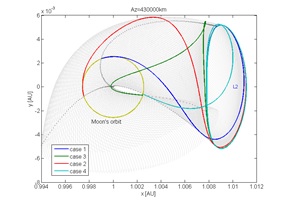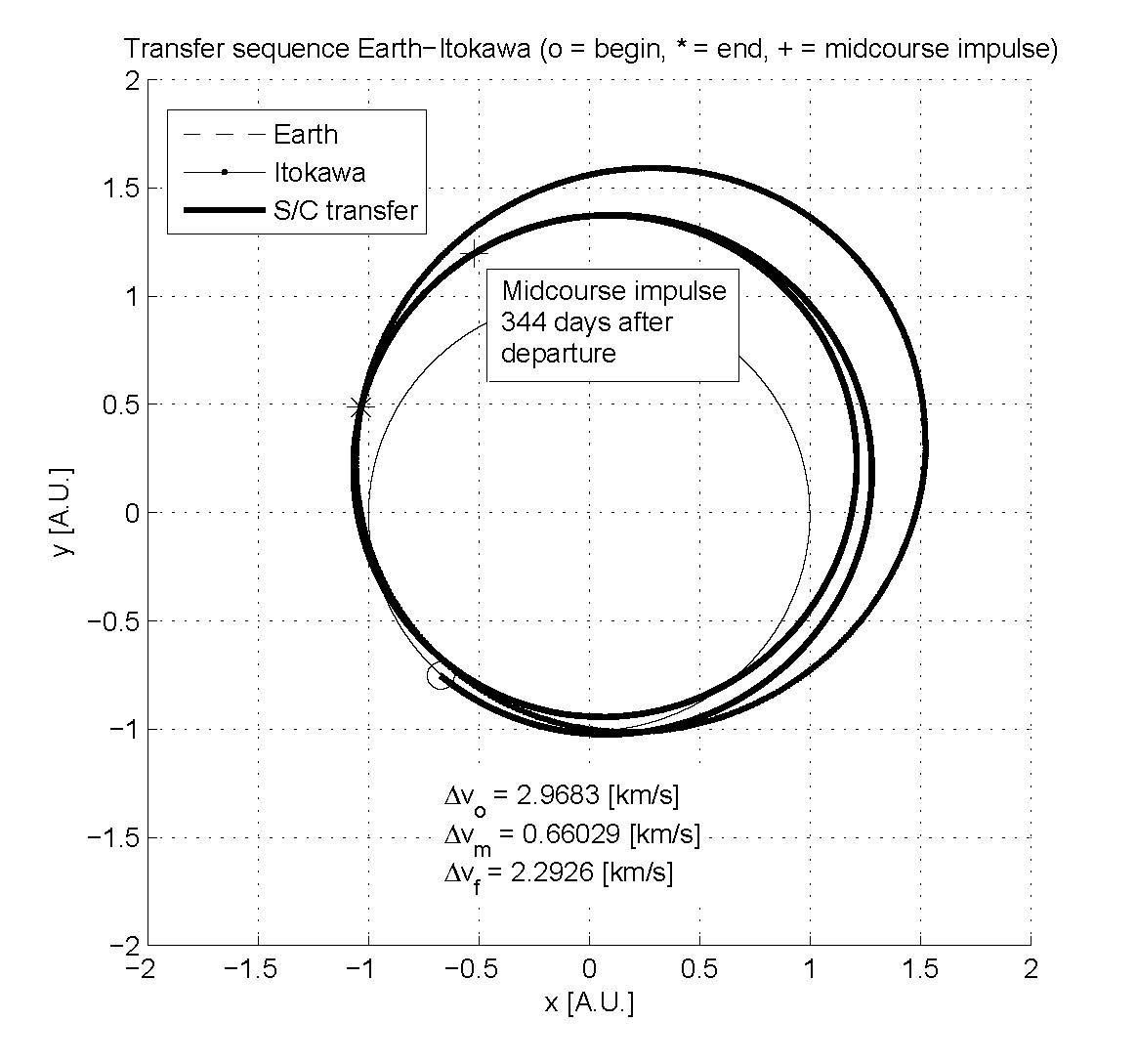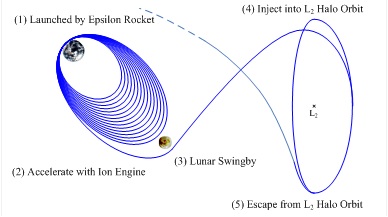Research Field
Astrodynamics Focused on Trajectory Planning

Astrodynamics has a long history beginning from 17th century, when Isaac Newton introduced his theories. Astrodynamics studies motion and equilibrium of celestial bodies based on Newton’s law of universal gravitation and it is the basics of Astronomy.
It has been developed so early that one might think that there’s no chance of developing it any further. However, increase in PC performance and technical developments like ion propulsion and solar sailing create a new field in astrodynamics.

Main hot topics in astrodynamics are Low-thrust, Swing-by and Restricted three-body problem. Low-thrust propulsion systems, ion engine in HAYABUSA or solar sailing of IKAROS, has higher efficiency than traditional propulsion system. Swing-by is technique used to change the velocity and/or direction of spacecraft by using gravity of celestial body. Restricted three-body problem(R3BP) research un/stable point called Lagrange point or Halo orbit around Lagrange points.
The right figure shows the result of trajectory optimization in the HAYABUSA's case. HAYABUSA traveled from the Earth to Itokawa by using Low-thrust and Swing-by.
Mission Design and System Development for Deep Space Spacecraft

Mission design and System development are also our research topics. These topics require a wide range of knowledge including linear algebra, statistics, programming, astrodynamics, and satellite design. You could fill up the lack of knowledge in the practice while doing your research.
Publications (Selected)
Peer-reviewed
- Ozaki, N., Yamamoto, T., Gonzalez-Franquesa, F., Gutierrez-Ramon, R., Pushparaj, N., Chikazawa, T., Dei Tos, D. A., Çelik, O., Marmo, N., Kawakatsu, Y., Arai, T., Nishiyama, K., and Takashima, T. “Mission Design of DESTINY+: Toward Active Asteroid (3200) Phaethon and Multiple Small Bodies.” Acta Astronautica, Vol. 196, 2022, pp. 42–56.https://doi.org/10.1016/j.actaastro.2022.03.029
- Ozaki, N., Oguri, K., and Funase, R. “PROCYON Mission Reanalysis: Low-Thrust Asteroid Flyby Trajectory Design leveraging Convex Programming.” The Journal of the Astronautical Sciences, Vol. 69, 2022, pp. 1–27.https://doi.org/10.1007/s40295-021-00299-4
- Ito, D., Pushparaj, N., and Kawakatsu, Y. “Expanding Interplanetary Transfer Opportunities from Geostationary Transfer Orbits via Earth Synchronous Orbits.” Journal of Spacecraft and Rockets, Vol. 60, No. 1, 2022, pp. 1–16.10.2514/1.G006487
- Ozaki, N., Yamamoto, T., Gonzalez-Franquesa, F., Gutierrez-Ramon, R., Pushparaj, N., Chikazawa, T., Dei Tos, D. A., Çelik, O., Marmo, N., Kawakatsu, Y., Arai, T., Nishiyama, K., and Takashima, T. “Mission Design of DESTINY+: Toward Active Asteroid (3200) Phaethon and Multiple Small Bodies.” Acta Astronautica, Vol. 196, 2022, pp. 42–56.https://doi.org/10.1016/j.actaastro.2022.03.029
- Ozaki, N., Oguri, K., and Funase, R. “PROCYON Mission Reanalysis: Low-Thrust Asteroid Flyby Trajectory Design leveraging Convex Programming.” The Journal of the Astronautical Sciences, Vol. 69, 2022, pp. 1–27.https://doi.org/10.1007/s40295-021-00299-4
- Ozaki, N., Yanagida, K., Chikazawa, T., Pushparaj, N., Takeishi, N., and Hyodo, R. “Asteroid Flyby Cycler Trajectory Design Using Deep Neural Networks.” Journal of Guidance, Control, and Dynamics, Vol. 45, No. 8, 2022, pp. 1496–1511.10.2514/1.G006487


